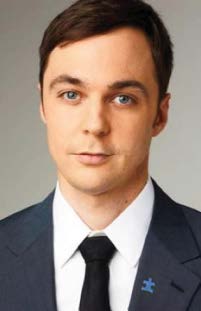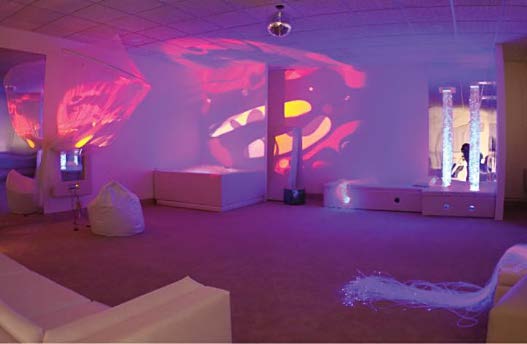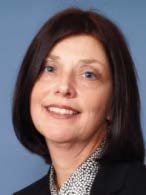
How quickly can a television show change a culture?
Has The Big Bang Theory altered societal perceptions, self-perceptions, and future possibilities for people with learning, cognitive or behavioral differences?
I t's hard to believe that Sheldon Cooper and his diverse group of friends entered family living rooms over ten years ago. Kerry Magro, an Autism Speaks staff member and adult with autism, wrote about his feelings in a blog. He noted the patterns exhibited by Sheldon that are common in people with Asperger's syndrome including his tendency to focus on details, his repetitive patterns of behavior, and his weekly social challenges. Kerry wrote, "Sheldon shows that dreams we hope for our own kids like having a job, being in a relationship and living independently can become a reality." 3
As an occupational therapist who has worked with people on the autism spectrum for over 30 years, I have seen therapy services change over the last decade with this new realization of our clients' interpersonal relationship TUNING IN: (Above) Attunement is the natural process that occurs during healthy parent-child bonding; (Right) Jim Parsons, the actor who plays Sheldon Cooper in The Big Bang Theory. potential. It is not uncommon to hear the parent of a child with autism say they want their child to have the opportunity for a personally meaningful career, to marry someone they love, and to have a happy social life filled with good friends. It is not uncommon for adults with Asperger's syndrome to continue to aspire to grow and develop new skills and abilities all through their lifespan. This might be thought of as a major paradigm shift that is changing the way we do treatment. We have now come to realize that we have as much to learn from our clients as to teach them. We in the healing professions now interact with our clients as partners in a two-way exchange of knowledge and information. This healing process has a name in the science of interpersonal neurobiology. It is called attunement and it is an intentional way to learn by experiencing healthy relationships. This paradigm shift is making us more mindfully aware practitioners and has the power to facilitate neuroplasticity in the brains of clients for lifelong learning. 9

NEUROPLASTICITY: LEARNING TO RELAX AND TO FEEL SOCIAL REWARDS
The Mindful Occupational Therapy Approach (MOTA) can be used to promote permanent changes in the brain for better occupational performance, self-awareness, social skills, sensory processing, and emotional selfregulation. Neuroscientists explain how neuroplasticity occurs with the saying, "neurons that fire together, wire together". They describe the process of neuroplasticity as the natural outcome of learning from experience when a person is mindfully aware of what they are doing in the moment.
Occupational therapy (OT) interventions addressing interpersonal neurobiology can be used to treat any form of childhood, adolescent, or adult anxiety including those associated with autism or Asperger's syndrome. The approach is also beneficial for overcoming traumatic events or feelings associated with reoccurring victimization patterns such as bullying, social isolation or scapegoating. 7-9
INTERPERSONAL NEUROBIOLOGY: LEARNING TO BE IN RELATIONSHIP
One way neuroplasticity influences interpersonal neurobiology is through focused attention on a person's internal world. Many cognitive, mental or learning chal lenges are due to an inability for a person to focus on the internal process necessary to develop a specific skill. For example, yoga can lead to permanent changes in a person's movement patterns because attention is focused on the subjective experience of producing, experiencing, and reflecting upon changing body positions. Yoga pro vides a physical example of the way the MOTA can be used to empower a client to meet new challenges by shifting out of the "automatic pilot" that takes over their brain when anxious or overly stressed. It is easy to see how this same process can be used to treat clients with post-traumatic stress as the therapist assists them in overcoming the emotional triggers that repeatedly take their minds off what they are doing and onto a traumatic memory. 9
ENHANCING THE SENSORY ENVIRONMENT: LEARNING TO SELF-REGULATE EMOTIONS
As a complement to the MOTA, multi-sensory environments are a great tool for matching therapeutic conditions with a client's individual sensory requirements for success. They may need to feel relaxed while practicing a new social challenge and a personally preferred sensory environment can help this happen. Examples of skills that can be mastered in this way are: responding well in a classroom bullying situation, playing a game with friends without alienating the losers, doing a class presentation or even defending a doctoral dissertation without feel ing overly-anxious. Treatment in a multisensory environment may involve the use of colored patterns projected on walls and ceilings that support a client's ability to more flexibly shift their visual attention, a positive mood change that accompanies their favorite music, the use of a weighted blanket or other source of deep pressure that is calming or vibro-acoustics which allows them to feel the joy of music more deeply throughout their body. This is a great way to help a person with autism expand verbal and nonverbal social skills beyond their current comfort zone. 4 Multi-sensory environments are also beneficial for clients with sensory processing challenges who may need to attend in a more focused way on one part of a process at a time so they can develop a higher cognitive capacity for sequential memory and visual-spatial pattern recognition. Many creative people who are diagnosed with ADHD and dyslexia have these challenges and once these skills are specifically addressed, the client can focus their attention and learn how to do challenging work more easily. Matching environmental demands with the needs of a client or student is a great non-pharmaceutical approach for improving attention to detailed or difficult work. 4
TUNING IN: (Above) Attunement is the natural process that occurs during healthy parent-child bonding; (Right) Jim Parsons, the actor who plays Sheldon Cooper in The Big Bang Theory.


SHIFTING GEARS: (Above) A multi-sensory environment set up to support a client with the need or desire for a downward shift into a parasympathetic state of greater relaxation or more focused attention; (Below) An environment set up for an upward shift into a sympathetically-driven state of safe interpersonal playfulness.
POLYVAGAL-INFORMED THERAPY: LEARNING TO BE IN SYNCHRONY
Fuller treatment possibilities were made available when the research of Stephen W. Porges, a professor of psychiatry and director of the Brain-Body Center at the University of Illinois at Chicago, identified the vagus nerve as providing a foundation for emotional tone or affect, social attachments for interpersonal relationships, communication skills, and a person's ability to self-regulate the system responsible for the fight-flight-freeze response. He wrote a book called The Polyvagal Theory in 2011 and supportive research followed. Daniel J. Siegel, MD, the Co-Director of the UCLA Mindful Awareness Research Center and the Executive Director of the Mindsight Institute applied this science in recent years to develop and research the Mindful Therapy Approach. 6-8
Aspects of polyvagal-informed SHIFTING GEARS: (Above) A multi-sensory environment set up to support a client with the need or desire for a downward shift into a parasympathetic state of greater relaxation or more focused attention; (Below) An environment set up for an upward shift into a sympathetically-driven state of safe interpersonal playfulness. and once these skills are specifically addressed, the client can focus their attention and learn how to do challenging work more easily. Matching environmental demands with the needs of a client or student is a great non-pharmaceutical approach for improving attention to detailed or difficult work. Fuller treatment possibilities were made available when the research of Stephen W. Porges, a professor of psychiatry and director of the Brain-Body Center at the 50 therapy have been an important part of OT throughout much of my 30-year career but have typically been limited to the treatment of children. A. Jean Ayres was an OT innovator who began treating children with learning challenges using sensory integration strategies designed to dampen influences of the fight-flightfreeze response during the 1960's. Mary Sue Williams and Sherry Shellenberger developed the Alert Program for SelfRegulation called How Does Your Engine Run? This OT-designed program is used to teach children how to sense what is happening in their bodies and enable them to intuitively shift to just-right if their "engine" speed is too high or too low. Occupational therapists, Patricia Oetter, Eileen Richter, and Sheila Frick developed the M.O.R.E. program which uses mouth toys to promote postural development, suck-swallow-breathe synchrony, and healthy feeding/eating patterns in children. All these forms of OT treatment were a preview to the greater possibilities that followed research on Porges' theory. 15-10
Dance therapist, Kalila Homann, shares my vision of healing and development through activation of the vagus nerve as it helps us sense what is happening inside our bodies. She wrote, "the idea that the functioning of the mind is rooted in the body is a founding principle of our field. It's thrilling to me that over the past 20 years, during the course of our careers, neuroscience research has shifted from a paradigm of mind- body duality to an evolving understanding that the organized complexity of the brain is embedded in the experience of the body." 2
Research validating applications of the polyvagal theory has broadened the treatment of clinical psychologists and counselors. It has provided new educational strategies that avoid facilitating the fight-flight-freeze response in classrooms and has spawned global initiatives to promote more gentle teaching, mentoring, and caregiving practices. Research on polyvagal-informed treatment has contributed to the understanding in healing professions that attunement supports emotional self-regulation as we all navigate our busy and often stress-filled days. 9
A PARADIGM SHIFT IN HEALING PROFESSIONS
So how has The Big Bang Theory altered the lives of people with learning, cognitive or behavioral differences? As if informed by polyvagal theory, the show has taken pressure off current generations of people with special needs and allowed them to overcome their fear of moving outside of self-limiting comfort zones. In a truly inclusive way, college campuses are changing so that young people with and without special needs are proudly identifying themselves as some sort of "nerd."
In a polyvagal-informed world, being free to make a mistake in a safe environment supports lifelong learning. The boundaries between therapist and client are removed as attunement allows the practitioner to promote better emotional self-regulation for relationships. Clients are empowered as they learn to direct their attention internally to produce their personally-desired therapeutic outcome. In this way, the MOTA is a spiritual art-form that turns a therapist into a healer and provides new possibilities for clients of all ages. So as a young adult with autism, Kerry has good reason to feel optimistic in knowing that healing through neuroplasticity is not just for kids anymore.•
ABOUT THE AUTHOR: Janice Ryan is a Doctor of Occupational Therapy and is the owner of Human Systems Occupational Therapy, Chattanooga, TN. She is a trained mentor for Human Systems Dynamics Institute, the vice-president and a certified trainer for American Association of Multi-Sensory Environments, and has completed evidence-based practice research on the Mindful Occupational Therapy Approach as an adjunct professor in the Department of Occupational Therapy, University of Tennessee Health Science Center, Memphis, Tennessee. Janice continues to mentor interns and complete evidence-based practice research at Human Systems Occupational Therapy. Contact: Janice Ryan, OTD, OTR/L, Human Systems Occupational Therapy, White Oak United Methodist Church, 2232 Lyndon Ave., Chattanooga, TN, 37415, Phone: (423) 280-9293, jryan@humansystemsot.com
